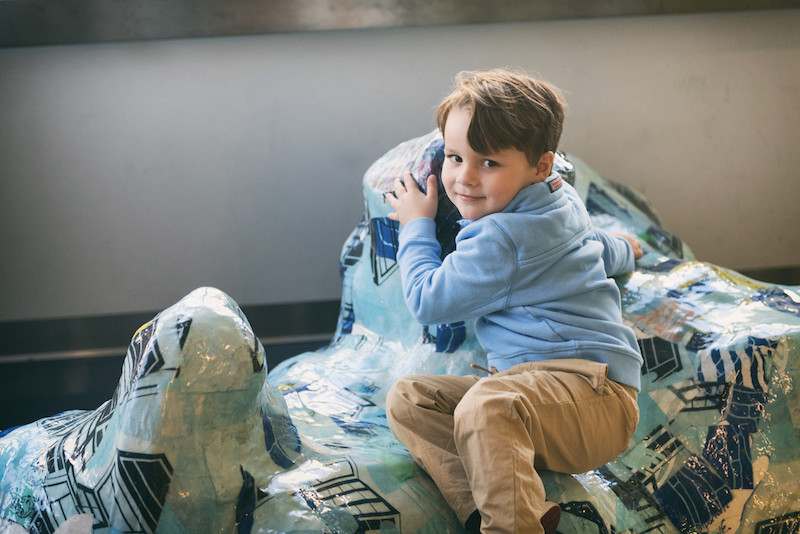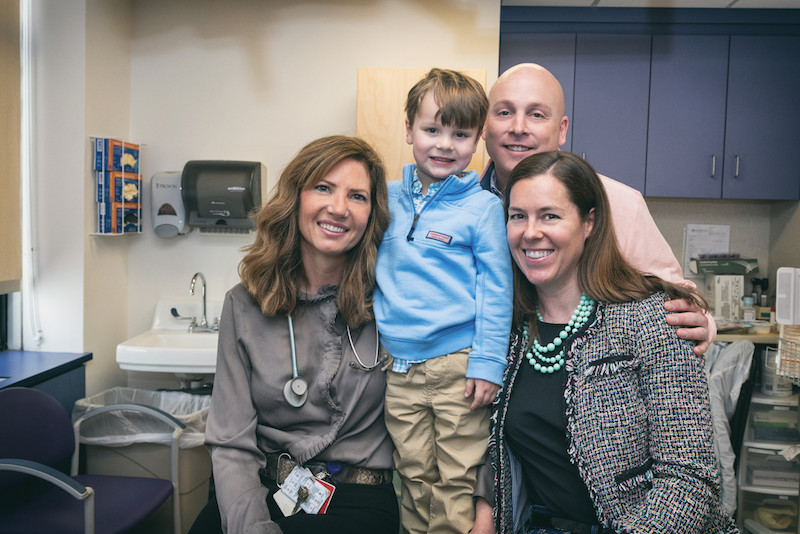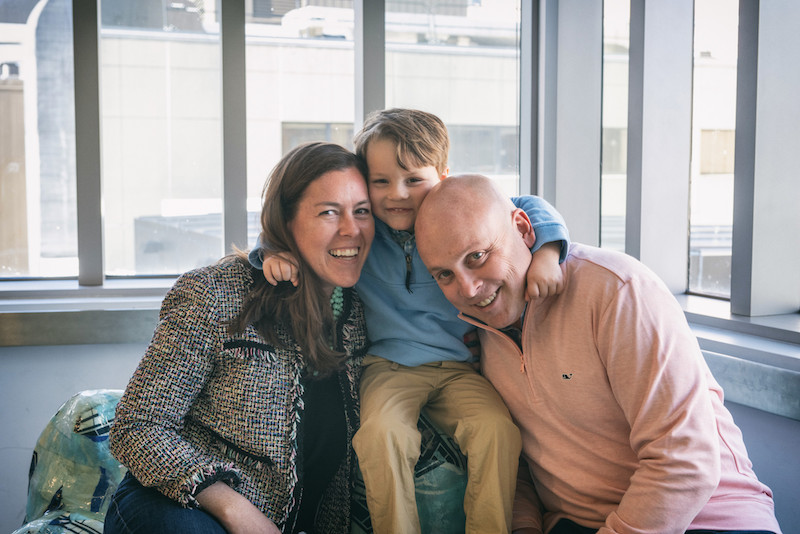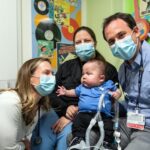More than a cough: Advocating for Jack

By the time he was 2 years old, Jack Baker had made some 20 trips to the emergency department and had been hospitalized about 10 times. For much of his young life, the little boy had struggled with a cough that his parents, Katie and Rick, could only describe as a barking, seal-like noise. He was often sick with colds, couldn’t sleep for all the coughing, had shortness of breath and wheezing and had started developing a blue tinge around his mouth.
But when Jack’s parents raised their concerns to his pediatrician, they were told that he seemed like a perfectly normal baby. Later, as she reviewed his medical records, Katie would find a note from his clinicians: “Mother claims son has a cough, but no one has heard it.”
“I was a first-time mom,” Katie says. “I didn’t know what to think.”

An ‘aha’ moment
Eventually, Jack was diagnosed with asthma and given steroids and an inhaler. When he was 8 months old, an evaluation at another Boston hospital uncovered a diagnosis of tracheobronchomalacia (TBM), which occurs when a child’s airway collapses during breathing. This can make it feel hard to breathe, lead to a vibrating noise or cough, result in recurring respiratory illnesses and, over time, lead to progressive lung injury. Yet Jack’s doctors told his parents that he would grow out of it.
Frustrated, Katie’s mother began researching the condition and found the Esophageal and Airway Treatment (EAT) Center at Boston Children’s Hospital. “We called and spoke with Dori Gallagher, the center’s coordinator,” Katie remembers. “As she asked us questions about Jack, it was clear she understood his condition — it was a total ‘aha’ moment.”

No growing out of it
The EAT team not only confirmed Jack’s diagnosis of TBM, but they also validated the Bakers’ concerns about its severity. In fact, a three-phase dynamic bronchoscopy and dynamic airway CT scan revealed numerous arteries compressing his trachea, leading to a near-100-percent airway collapse and the beginnings of lung damage. There would be no growing out of it.
In 2017, the center’s surgical director, Dr. Russell Jennings, performed a posterior tracheopexy, followed by an anterior aortopexy in 2018. These procedures, which were developed and refined at Boston Children’s, opened up and supported Jack’s airway, making it easier for him to breathe without collapse.
The procedures — along with a handful of daily medications, inhaler, home oxygen and an airway clearance vest that helps clear mucus from his chest —have made a difference, but haven’t completely eliminated Jack’s symptoms. His care has been complicated by the fact that he’s allergic to most antibiotics, making it difficult to safely and effectively treat him when he gets sick, which is frequently.
“We’re still in the thick of things,” says Katie. “We all know he may need a third surgery at some point — but he’s definitely better than he was.”

Being an advocate
Despite his health challenges, Jack is an active little boy who likes trying new things, whether that means skiing, learning to swim or playing music. When he’s not obsessing over fire trucks, he’s traveling the world with his parents, a pastime made easier by a supportive care team. Jack’s clinicians help ensure that he has the oxygen and equipment he needs to travel, and are always available to respond to questions.
Katie recalls once calling Leah Frain, the EAT Center’s nurse practitioner with a concern. “She told me that she was at the starting line of the Boston Marathon and couldn’t talk long, but that she would call Jack in a prescription.” To the Bakers’ surprise, Frain wasn’t a spectator at the race — she was a participant. Yet Jack’s medication was still ready for him later that day.
Positive experiences like this have led Katie to join Boston Children’s Family Advisory Council, both as a way to give back and to ensure that all families receive the best care possible. “It’s been great to be more involved,” she explains. “We all have to be advocates for our children.”
Learn about the Esophageal and Airway Treatment Center.
Related Posts :
-

Using her voice: After tracheomalacia treatment, Claire keeps her eye on the ball
Claire Kantany is only 10, but she knows what she wants to do when she grows up — in fact, she’...
-

Optimizing care for bronchopulmonary dysplasia, infant by infant
Preterm newborns with bronchopulmonary dysplasia (BPD) can require ongoing mechanical ventilation to support their lungs. But babies with BPD aren't ...
-

Soft stents, hardened in place by UV light, allow a snug, custom fit
Airway stents are often used when the trachea and bronchi need to be buttressed, as in children and adults with ...
-

Five things parents should know about vascular rings
If your child has a high-pitched cough, breathes loudly, wheezes, has difficulty eating or swallowing, or always seems to be ...





